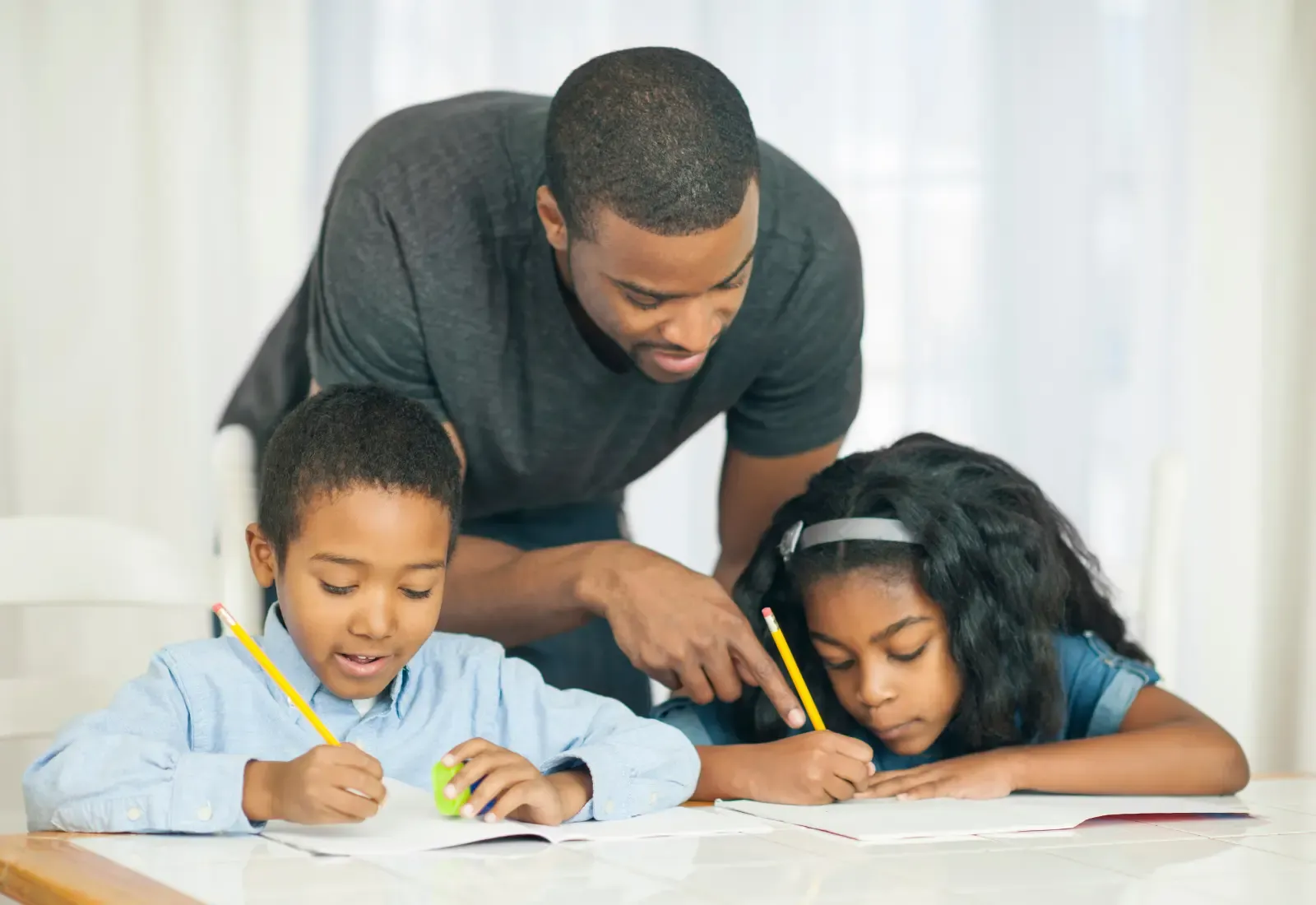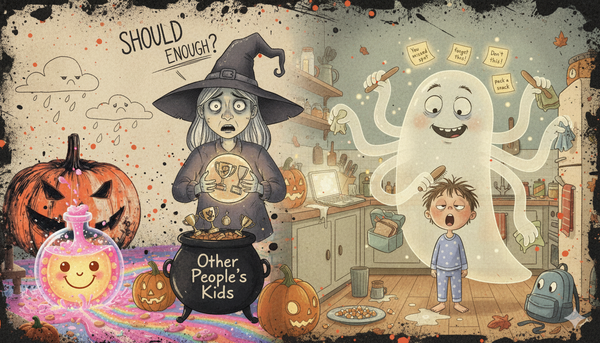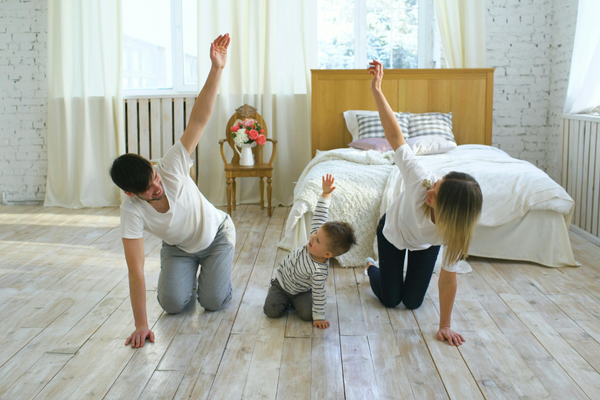Contradictory fears.
These are some of the most common stresses among new homeschooling parents.
Ironic since most parents take their kids out of traditional school to give them a more positive, less fear-based education. Yet… they may find themselves trading one set of fears for another.
You might feel you desperately want to create a more positive learning environment for your child, where they’ll be seen, heard, loved, and free to enjoy childhood.
You might also have a gnawing worry about the academic side of homeschooling. You might worry about choosing ‘the right’ curriculum and making sure your child doesn’t fall behind, miss out…or… or… not get into college?…or …not know how to ‘do life.’
It can start feeling like your desire to give your kid playtime, freedom, and self-paced learning is competing with maintaining standards and academic achievement.
Is it a competition? Are play and academic success at odds? Can you have it all?
Exhausting.
What do you do?
You can (meaning your child can) have it all.
A self-paced, joyful education is not only possible, it can lead to stronger academic outcomes than traditional educational approaches.
It is not an either-or situation.
So how do you do it?
Interactive teaching methods
Interactive teaching methods make self-paced learning through play possible. They are ones you can use with your child in all the small interactions in everyday life and the ‘school time’ interactions you have as your child’s teacher and mentor.
These methods all share one thing — they engage your kid in active learning at every level.
They recognize that your child is learning through every encounter (big and small) all day long regardless of the curriculum or assessments you use.
These methods are the connectors between academic skills and ideas and deep learning — being able to use the skills and concepts in real life. These methods help kids learn through the same type of ‘playful’ interactions that young kids do naturally.
Think about your child at age 3 (or 6 or 8) when they ask ‘why’ all day long. Or when they experiment with making water balloons and the result is a wet floor and a crying child who just slipped. Or when playing in the dirt in your garden makes them wildly happy. They are learning through play, learning by doing, learning through observation, questions, trial and error, and games.
Your young child already knows all the methods that work best. They have been using them for years by the time they reach school age.
Interactive teaching methods include:
- project-based learning
- gamification
- Socratic questioning
- learning by doing
They are versions of learning through play.
They are effective at helping kids learn academically because they focus on deep understanding, engagement, and real-world application. They include teaching, mentoring, and practice, but in the context of exploration.
These methods encourage kids to participate actively, think critically, problem problem-solve. Doing all of these things leads to better retention of ideas, stronger skills, deeper mastery of concepts, and the ability to apply knowledge in real life.
These methods also allow you, the parent-teacher, to create a supportive, fun learning environment, in contrast to the traditional, information-heavy, worksheet-driven, test-focused approach.
Here’s what they look like and how you can have it all:
Project-Based Learning (PBL)
PBL uses projects with a motivating question and a pathway that your child develops to find their unique answer to that question. PBL encourages kids to take ownership of their projects rather than being passive participants like in ‘follow the directions’ projects.
Let’s say your young child’s question is, “How can I build a bridge for my toy vehicles that will not tip over and will act as a ramp that the cars can cruise down?” They have a motivating question and will test out ways to make their bridge, iterating until they figure it out.
The more you discuss it with them using open-ended questions, the more they will articulate and reflect. This becomes their learning process.
If you and your kid look up examples of other bridges and ramps and talk about how they are built, this will add to their deep learning about engineering.
What happens through project based learning?
Kids develop agency, and critical thinking, and learn how to apply knowledge.
Why it’s fun.
It gives kids a sense of fulfillment and accomplishment. They are going on a quest, just like your three-year-old did when they experimented with water balloons. They are learning by experimenting with ideas.
And the academics?
The more you show interest in your kid’s projects (a full discussion of project based learning is for another article) and talk with them about the steps they are taking, ask open-ended questions, and help them see relationships between concepts — water filling the balloon and volume, or the physics of the bridge and velocity of the toy car — the more you are academically helping your child build a web of knowledge for themselves.
Gamification
Does your child like games? Games can include anything — video games, cards, jump rope, or just adding game elements like points or badges to a set of math problems, or playing board games or spelling games.
Kids who love games often enjoy challenging themselves to improve, gain points, hone their skills, or beat their competition.
The same elements that make a game fun work well in educational games too. And the same elements that are in ‘educational games’ are in ‘fun games’ too.
Chess is a game of strategic thinking. Spelling games improve… spelling and often the lexicon of language. Jump rope improves coordination and an understanding of physics. Video games (I’m adding a qualifier here) — *good* video games — challenge kids to not only improve their fine motor skills, but also their problem-solving, communication, strategic thinking, and creativity.
Gamification of academic learning taps into that same intrinsic motivation and can make learning feel more fun and rewarding.
It can help engage kids at a deeper level and prompt them to push themselves more than when faced with just a worksheet of math problems or spelling words. Gamification can turn a page of boring facts about the Great Depression or photosynthesis into an escape room adventure filled with motivating puzzles and clues to solve.
Socratic questioning
Most parents naturally use a form of Socratic questions with their young children — asking open-ended questions that encourage kids to think more deeply and articulate their reasoning.
It works with your three-year-old on the playground. And it works with your eleven-year-old who is trying to write a history essay.
When you ask things like, “What do you think will happen if you do X?” or “Why do you think the [conquering side] wanted to do X?” you are using questions to prompt engagement.
You can use questions to help your child think through their thoughts, prompt them to give an opinion, and back it up with reasoning and evidence.
You can combine open-ended questions with debate-style discussions to help your child practice seeing both sides of an argument as well.
Next time they make a strong statement: “Ice cream sundaes are better than popsicles.” Challenge them to defend their opinion. Then challenge them to argue the opposite opinion, just for fun. They will be gaining reasoning and communication skills in the process.
It works well for all subjects. The more you use the technique casually, even when you take your kid shopping with you or to the beach, the more it becomes a discussion style.
Your kid becomes more adept at analyzing and articulating what they observe, read, and learn about. This means they will remember and apply the information in a useful way rather than just memorize and repeat the information.
And..if your kids are anything like mine, they love to debate practically anything.
This practice works well to help kids learn the art of respectful disagreement also, which is a valuable life skill.
Learning by Doing
All hands-on activities and real-world experiences are learning activities.
You can enhance your child’s learning and takeaways by using open-ended questions and discussions.
When kids do experiments — with a water balloon in your kitchen, dirt from your garden, or kitchen chemistry — they often retain more than when they learn something only through a worksheet. They are active participants and may engage on multiple levels — visual, audible, reading, and kinesthetic — which strengthens their understanding.
The learning is fun because they are involved in the doing. It is more meaningful because they are making more connections and building out their web of knowledge.
It is a different learning experience from that of memorizing facts from a book without taking in the real-world impact of those facts.
Learning through play
All of the above teaching methods are derived from play — something kids do instinctively.
The difference is that the playground is extended from your kitchen and garden and the jungle gym to books and ideas — about history, science, literature, philosophy… and life.
The learning process is fundamentally the same.
Only now, as a ‘learning activity’ we can include academic lessons, trips to the zoo and museum, discussions, experiments, and time to imagine, write and rewrite, think and revise as part of the process of learning through play.
We, the parents, need to extend our understanding of ‘play’ to include academic topics as our kids grow and their world enlarges.
We can help our kids gain skills and learn new topics by using the ‘learning through play’ teaching strategies.
And the other core element in learning strong academic skills through play?
Building a strong relationship with our kids.
How strong relationships help kids learn
When we take time to talk with, discuss, question, play games, teach lessons, and mentor our kids — we are building a strong relationship with them.
We are building trust, and empathy, providing support, and encouraging them to expand their world.
We are helping our kids feel understood. This helps them feel motivated and supported in their learning process.
It also sends a message to them that what, how, and when they learn is more important than fitting into an arbitrarily designated, standardized timeframe.
This self-paced, personalized learning allows kids to more effectively gain skills mastery and deep understanding which they can apply, rather than superficial memorization of facts for tests.
Takeaways
Each of these methods is grounded in the play-based learning kids do naturally. Each is built on the organic ways kids learn and extends their learning into an ever-growing world of ideas.
Kids retain their joy of learning because they are grounded in a natural form of exploration.
This is not to say it is all effortless.
Effort, learning, and play go together.
When kids play, they are also putting serious effort into it — into learning, discovering, and improving their skills. Play, fun, work, effort — they are frequently aspects of the same process — the joy of learning.
By extending these playful, exploratory methods into more structured learning environments, you can teach and mentor your kid with a broader and deeper range of ideas while maintaining their engagement and passion for learning.
How will you know you’re succeeding on the academic side?
Observe your child.
They will use bigger vocabulary words that they picked up from discussions with you or from reading or going to museums. They will present well-reasoned arguments on topics ranging from literature to philosophy to history and science. They will prepare projects, presentations, and demonstrations that show a depth of knowledge, understanding, and application.
In short, you will see and participate in their intellectual growth the more closely you participate in mentoring them through these teaching strategies.
I’m willing to bet you will discover that your kid remains curious about new ideas, becomes more independent and confident, and finds things they are passionate about.
Sure, you can give them tests and grades, but those will be window-dressing. You will be able to assess their knowledge based on your daily interactions.
You can cover all the same academic topics, (whether or not you have the perfect curriculum), but by using these strategies, even in bits and pieces over time, you will be keeping the magic of learning alive.
Your kid’s academic abilities will likely leap ahead. Your child will likely stay connected to their early childhood wonder and love of learning… and they will be able to use what they know in real life, not just on a test.
This article was originally published at Medium. Republished with permission from the author.











Member discussion